Buddhism

Buddhism was founded by Siddhartha Gautama, a prince who lived in northeastern India around 500 BCE. He lived a life of luxury, but he was not content. After years of wandering, he attained enlightenment while meditating under a fig tree. For the rest of his life, the prince, now known as the Buddha, taught others how to become enlightened and free themselves from suffering.
Most Buddhists do not believe the world was created and is ruled by a god. Instead, Buddhism is a philosophy and a way of life that emphasizes moral actions. This is guided by the Buddha’s Noble Eightfold Path which promotes moderation and mindfulness. The ultimate purpose of life is to end suffering. Some Buddhists believe that it is possible to go beyond this and become another Buddha.
Buddha’s teachings were written down in many different texts called sutras. The earliest sutras are the Tipitaka, but some branches of Buddhism emphasize later texts. Other important texts include commentaries called shastras and the collected sayings of important Buddhist monks.
Most Buddhists maintain an altar at home to practice meditation and reflection. Buddhists may also visit a temple or monastery to obtain religious instruction. These are managed by orders of monks, each with their own teachings, practices, and organization. Spiritual leadership can also be informal since Buddhists recognize the importance of personal mentorship. In the Tibetan form of Vajrayana Buddhism, the Dalai Lama is the spiritual leader and had previously been the political leader, too.
Listen to Buddhist monks chanting:
Listen to a female Buddhist monk chanting:
Denominations
Theravada – This school of Buddhism emphasizes the Buddha’s teachings that liberation from earthly suffering comes from personal enlightenment. Its sacred texts are written in the ancient Pali language, and its practice today is common in Sri Lanka and Southeast Asia.
Mahayana – The largest school, Mahayana Buddhism emphasizes compassion for all beings as the way to end suffering, and tends to focus more on worldly matters. It uses more recent texts written in Sanskrit.
Vajrayana – These traditions are most commonly associated with the Tibetan diaspora. They add additional texts, rituals, and lessons to Mahayana Buddhism. Because these additions may be secret or esoteric, Vajrayana Buddhism privileges the relationship between teacher and student as a primary means to enlightenment.
Color
Colors are used to represent beliefs, traditions, and concepts in many religious traditions. Many Buddhist monks wear orange robes, particularly those of the Theravada school. Historically, orange dye was inexpensive which fit the Buddhist concepts of humility, simplicity, and detachment from worldly things. Orange is also associated with illumination, wisdom, and reaching the highest state of perfection.
White was chosen as the exhibit’s background color because it is meaningful to each of the five religions. In Buddhism, white represents knowledge, longevity, and purity. White is the symbolic color of Vairocana, one of the celestial Buddhas in the Mahayana school.
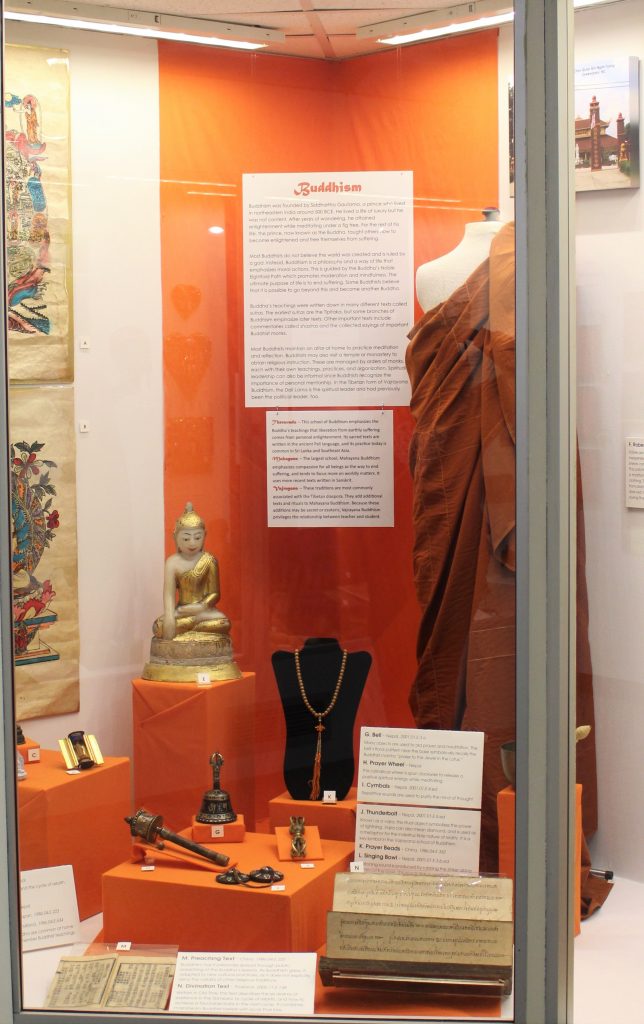
Learn about the featured objects below
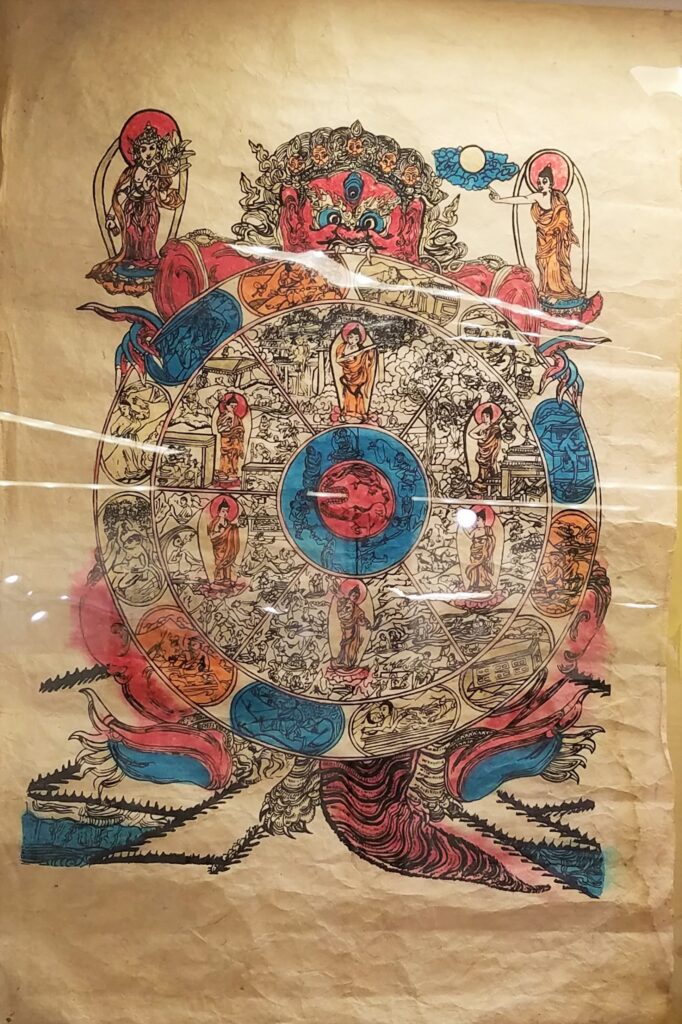
A. Wheel of Life Print
Nepal
This cosmogram depicts karma and the cycle of rebirth.
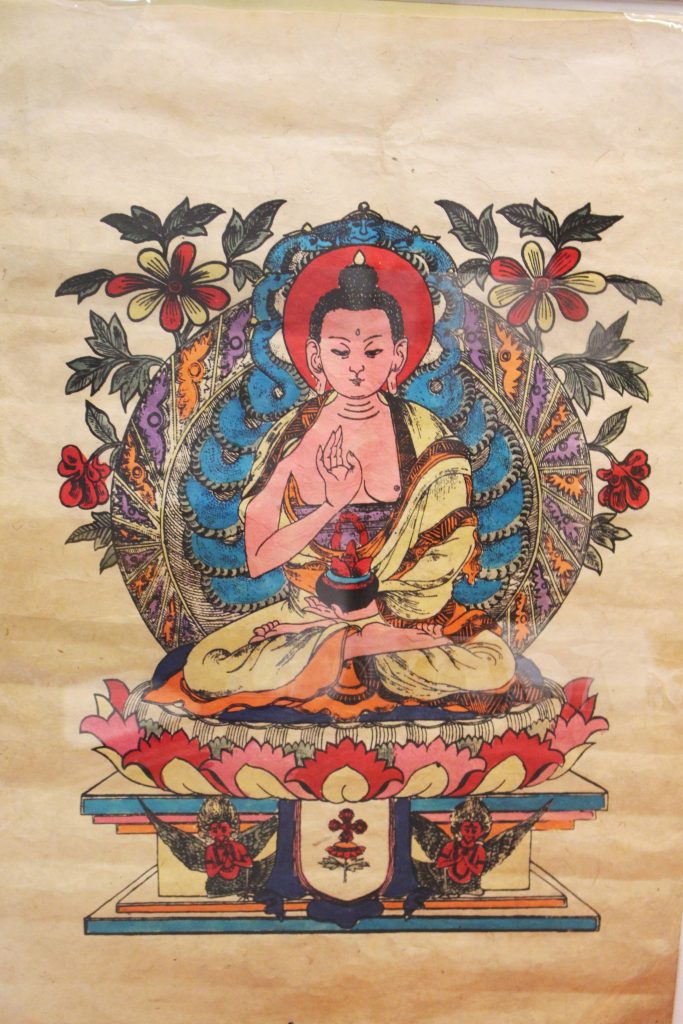
B. Buddha Print
Nepal
Devotional images of the Buddha are common at home altars. They help devotees remember Buddhist teachings.
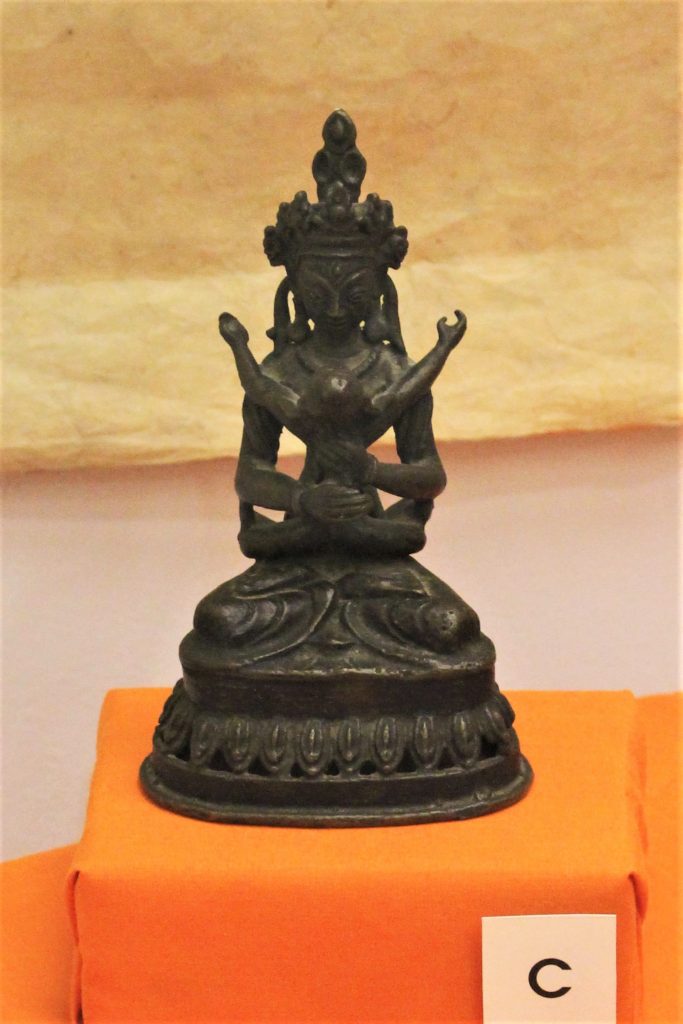
C. Buddha Sculpture
Nepal
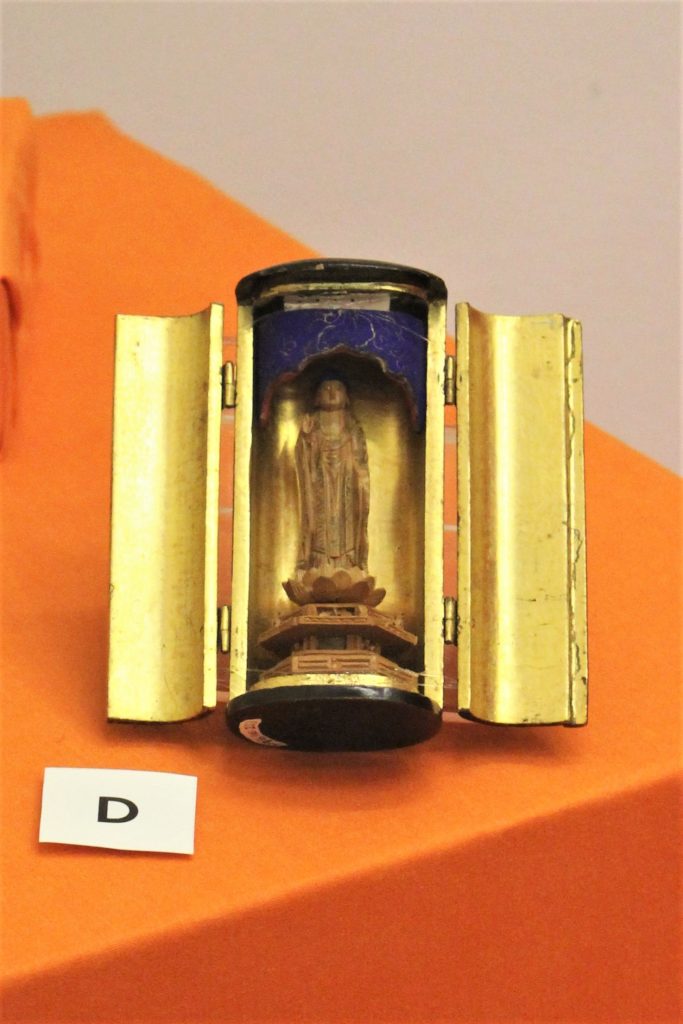
D. Buddha Sculpture
Japan
1986.04.E.223
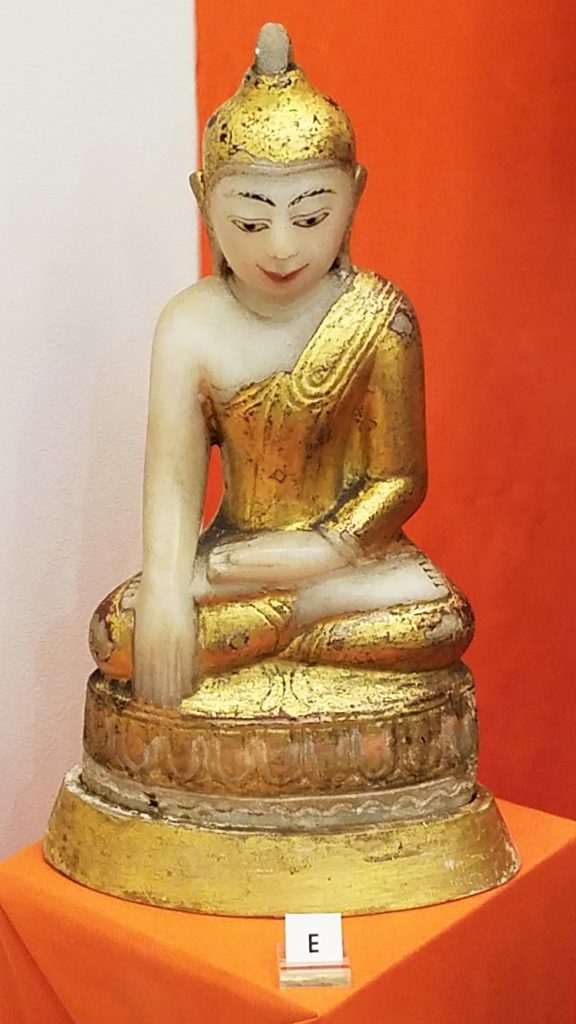
E. Buddha Sculpture
Thailand
1986.04.E.634
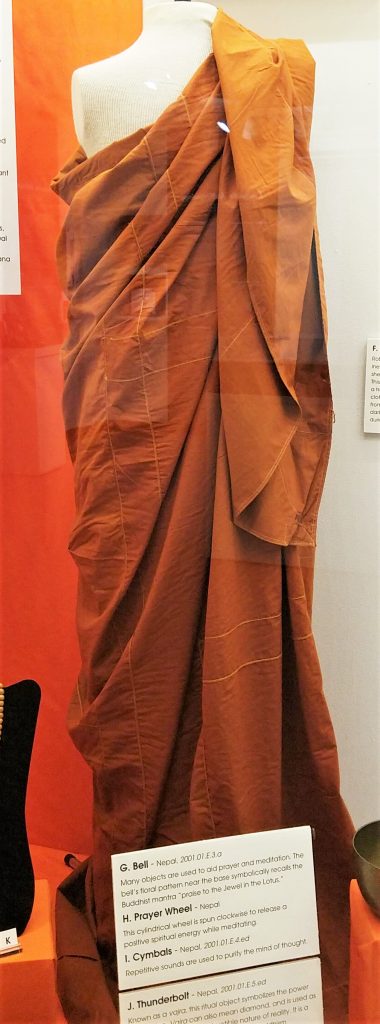
F. Robes
Myanmar (Burma)
1987.03.E.2.a-b
Robes are worn by Buddhist monks for their simplicity and inexpensiveness. These robes consist of two rectangular sheets composed of smaller rectangles sewn together. This patchwork is symbolic of poverty, specifically a tradition of scavenging scraps of cloth to make clothing. The deep orange color is traditionally obtained from plant dyes. However, modern Burmese robes are a dark red, reflecting a cheaper style adopted by monks during their country’s isolation.
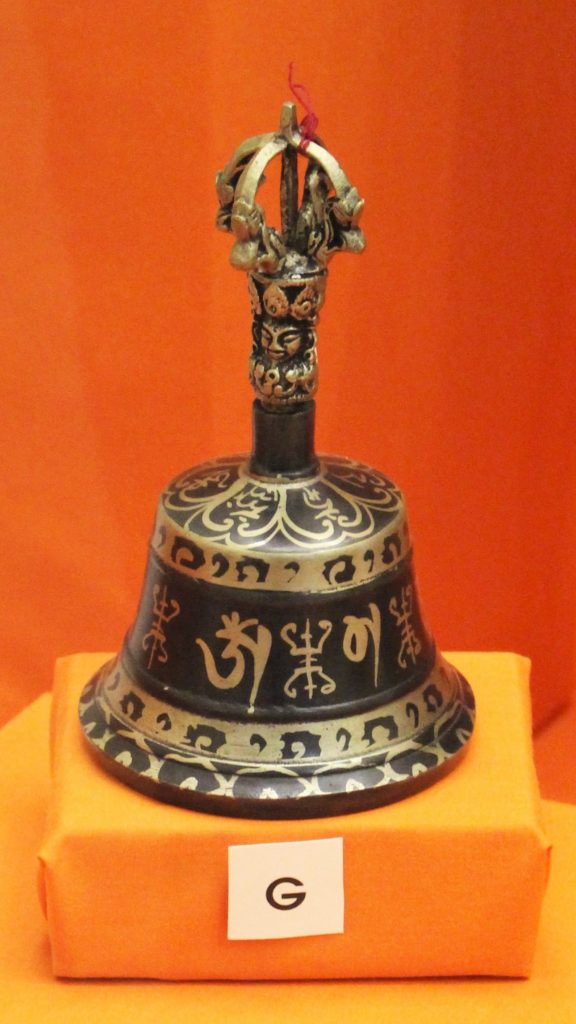
G. Bell
Nepal
2001.01.E.3.a
Many objects are used to aid prayer and meditation. The bell’s floral pattern near the base symbolically recalls the Buddhist mantra “praise to the Jewel in the Lotus.”

H. Prayer Wheel
Nepal
This cylindrical wheel is spun clockwise to release a positive spiritual energy while meditating.

I. Cymbals
Nepal
2001.01.E.4.ed
Repetitive sounds are used to purify the mind of thought.

J. Thunderbolt
Nepal
2001.01.E.5.ed
Known as a vajra, this ritual object symbolizes the power of lightning. Vajra can also mean diamond, and is used as a metaphor for the indestructible nature of reality. It is a key symbol in the Vajrayana school of Buddhism.
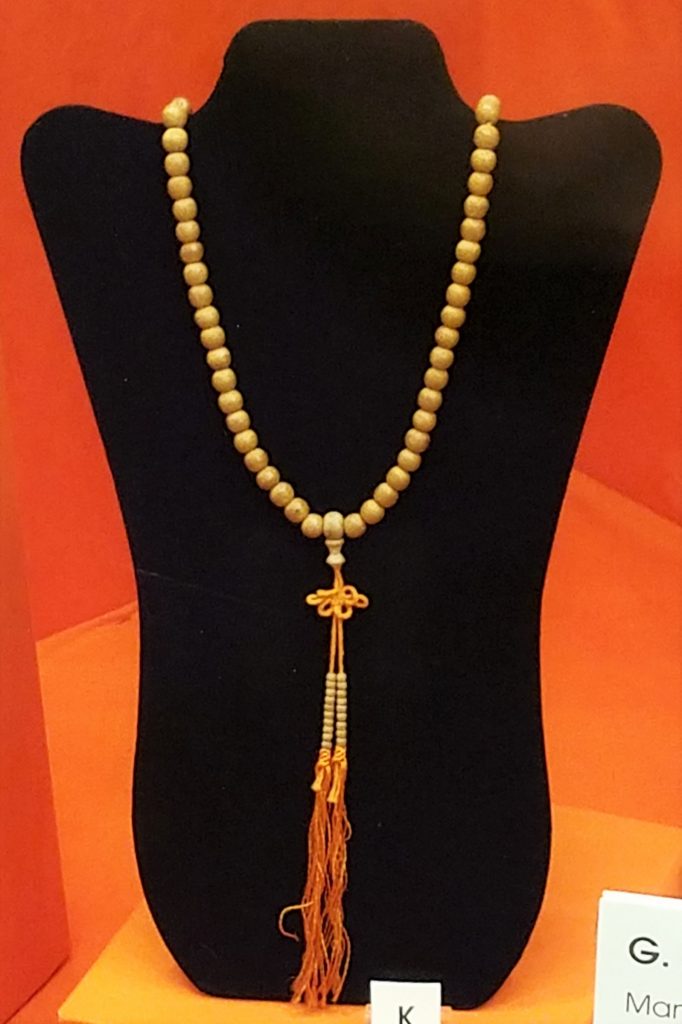
K. Prayer Beads
China
1986.04.E.332
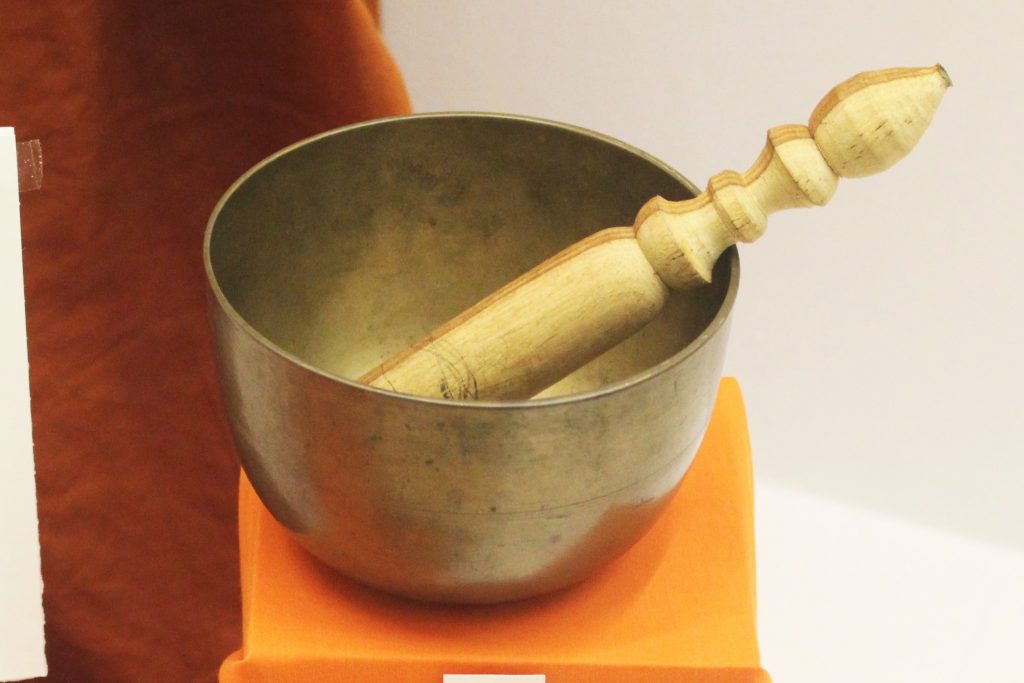
L. Singing Bowl
Nepal
2001.01.E.3.b.ed
A droning sound is produced by rubbing the striker along the rim of the bowl. This sound aids in meditation.
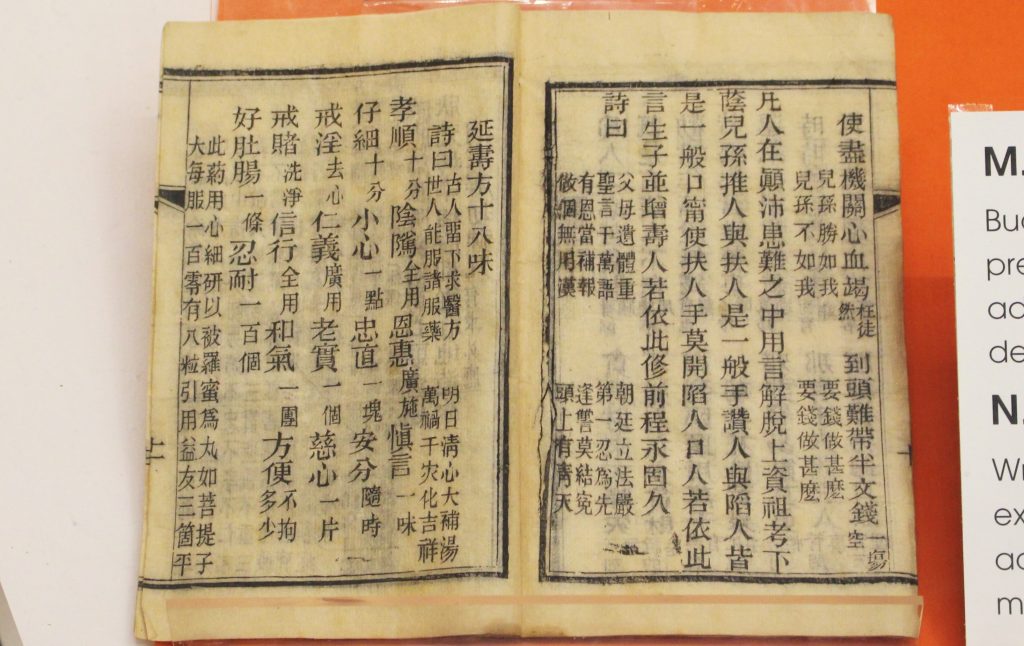
M. Preaching Text
China
1986.04.E.220
Buddhism has traditionally spread through public preaching of the Buddha’s lessons. As Buddhism grew, it adapted to new cultural practices, as it does not explicitly deny the validity of other religious traditions.
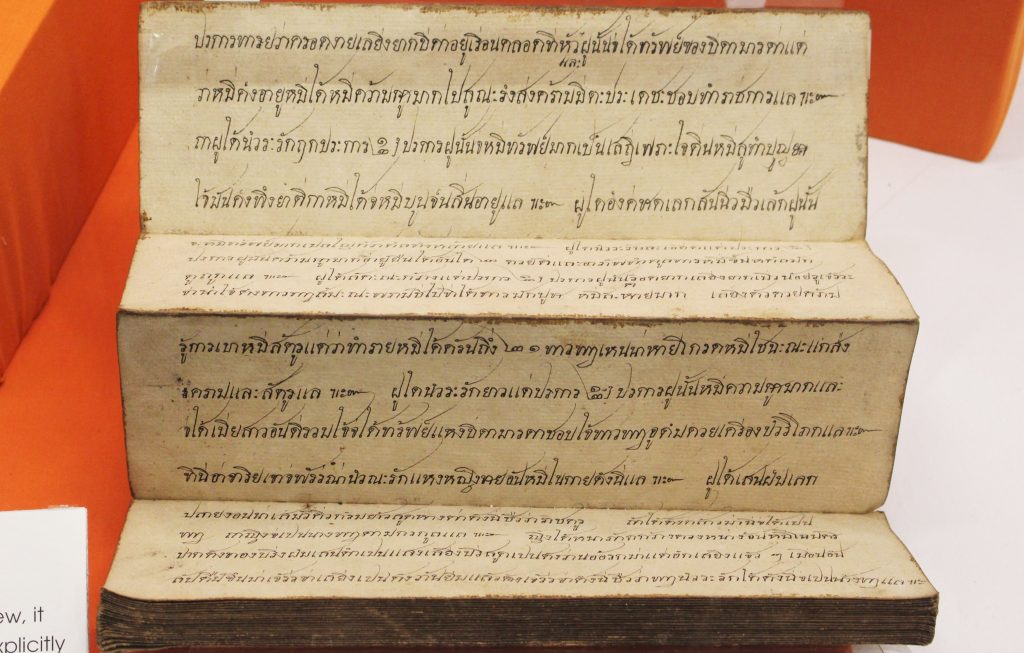
N. Divination Text
Thailand
2005.11.E.138
Written in Old Thai, this text describes the six realms of existence in the Samsara, or cycle of rebirth, and how to achieve a favorable state in the next cycle. It combines mainstream Buddhist beliefs with local Thai lore.

